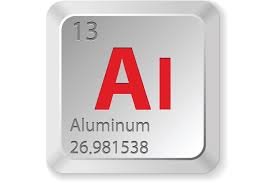Education is evolving with the rise of new technologies. One of the most promising innovations is blockchain technology. Initially known for its use in cryptocurrencies like Bitcoin, blockchain is now making its way into education. Blockchain in education offers numerous benefits, including improved transparency and enhanced security. As educational institutions face increasing challenges in managing records and protecting data, blockchain provides a solution. Let’s explore how blockchain is transforming education and why it matters.
1. What is Blockchain Technology?
Blockchain is a decentralized, digital ledger that records transactions in a secure, transparent manner. Each entry in a blockchain is called a “block,” and these blocks are linked together to form a “chain.” Once a block is added, it cannot be changed or deleted. This ensures the integrity and security of the data.
In the context of education, blockchain technology can be used to store academic records, certifications, and other important documents. By using blockchain, schools and universities can ensure that records are accurate, secure, and tamper-proof.
2. The Importance of Blockchain in Education
Blockchain in education addresses two critical issues: transparency and security. These are essential for maintaining trust between educational institutions, students, and employers.
a. Transparency
Blockchain technology provides a transparent system where all data is visible to authorized parties. For example, students can access their academic records, and employers can verify degrees without the need for third-party verification. This reduces the potential for fraud and ensures that all stakeholders have access to accurate information.
b. Security
Security is a growing concern in education, especially with the increase in cyberattacks on educational institutions. Blockchain offers a secure way to store and manage student data. Since blockchain records cannot be altered or tampered with, it provides a high level of protection for sensitive information like academic records, personal details, and certifications.
3. How Blockchain Enhances Transparency in Education
One of the key benefits of blockchain in education is the increased transparency it offers. Let’s look at how it achieves this:
a. Credential Verification
With blockchain, verifying academic credentials becomes faster and more transparent. Traditionally, verifying a degree or certification required contacting the educational institution. This process can be time-consuming and prone to errors. Blockchain eliminates the need for intermediaries. Employers and other institutions can verify credentials directly on the blockchain, ensuring authenticity and accuracy.
b. Permanent Record Keeping
Academic records stored on the blockchain are permanent. Once a record is added, it cannot be changed or deleted. This ensures that students’ records are protected from unauthorized alterations. It also creates a transparent history of a student’s academic achievements, making it easier to track their progress over time.
c. Open Access to Information
Blockchain gives students more control over their own information. They can access their academic records anytime, anywhere. This empowers students to share their achievements with potential employers or other educational institutions without delays or third-party involvement.
4. How Blockchain Enhances Security in Education
In addition to transparency, blockchain in education offers unparalleled security. Here are some ways it strengthens data protection:
a. Decentralized System
Blockchain operates on a decentralized system. This means that data is not stored in a single location, reducing the risk of hacking. Even if one part of the network is compromised, the data remains safe because it is distributed across multiple nodes.
b. Immutability of Records
The immutability of blockchain records adds an extra layer of security. Once data is entered into the blockchain, it cannot be altered or deleted. This makes it nearly impossible for unauthorized individuals to tamper with academic records or certifications.
c. Encryption
Blockchain uses advanced encryption methods to protect data. This ensures that sensitive information, such as personal details and academic performance, is kept secure. Only authorized parties can access or view the data, further enhancing security.
5. Use Cases of Blockchain in Education
Blockchain is already being applied in various educational settings. Let’s look at some real-world examples:
a. Diploma and Certificate Verification
Several universities and institutions have started using blockchain to issue digital diplomas and certificates. For example, MIT’s Digital Diploma project allows graduates to access and share their diplomas through blockchain. Employers can easily verify the authenticity of these diplomas without contacting the institution.
b. Student Records Management
Blockchain can streamline the process of managing student records. Schools and universities can store all academic records, including grades, attendance, and extracurricular achievements, on a blockchain. This ensures that records are secure, transparent, and easily accessible by authorized parties.
c. Student Identity Verification
Blockchain can also be used for student identity verification. With blockchain-based student IDs, students can prove their identity without the need for physical documents. This helps prevent identity fraud and simplifies the enrollment process for students moving between institutions.
6. Benefits of Blockchain in Education
Blockchain technology offers several key benefits to the education sector. These include:
a. Reduced Fraud
Blockchain makes it easier to verify the authenticity of academic records. This reduces the risk of credential fraud, where individuals claim degrees or certifications they did not earn.
b. Cost Savings
By automating the process of record verification and management, blockchain reduces administrative costs for educational institutions. It eliminates the need for intermediaries, saving time and money.
c. Global Accessibility
Blockchain provides a global platform for academic records. Students who move between countries or institutions can easily transfer their academic credentials. This is especially useful for international students and those pursuing online education.
d. Improved Trust
The transparency and security of blockchain build trust between students, institutions, and employers. Stakeholders can be confident that the data they access is accurate, up-to-date, and secure.
7. Challenges of Implementing Blockchain in Education
Despite its benefits, implementing blockchain in education comes with challenges. Here are a few:
a. Cost of Implementation
Setting up a blockchain system requires significant investment in technology and infrastructure. Many institutions may lack the budget or technical expertise to implement blockchain solutions.
b. Adoption
The adoption of blockchain in education is still in its early stages. Schools, universities, and employers need to understand the technology and its potential before widespread adoption can occur.
c. Data Privacy
While blockchain enhances security, it also raises concerns about data privacy. Institutions must ensure that they comply with privacy regulations when storing student data on the blockchain.
d. Interoperability
Different institutions may use different blockchain systems, creating challenges for interoperability. Standardizing blockchain protocols across the education sector is essential for seamless data sharing.
8. The Future of Blockchain in Education
The future of blockchain in education looks promising. As more institutions adopt blockchain, we can expect to see more widespread use of digital diplomas, secure record management, and transparent credential verification.
Blockchain has the potential to transform education by enhancing both transparency and security. As technology evolves, it will become more accessible and affordable for educational institutions. In the coming years, blockchain may become a standard tool for managing academic records and certifications.
Conclusion
Blockchain in education is a game changer. It enhances transparency by making academic records easily verifiable and secure. It improves security by protecting sensitive data from tampering and unauthorized access. Though challenges remain, the benefits of blockchain in education are undeniable. As the technology becomes more widespread, it will continue to revolutionize how institutions manage records, verify credentials, and protect student information. Blockchain in education offers a bright future for transparent and secure learning.





